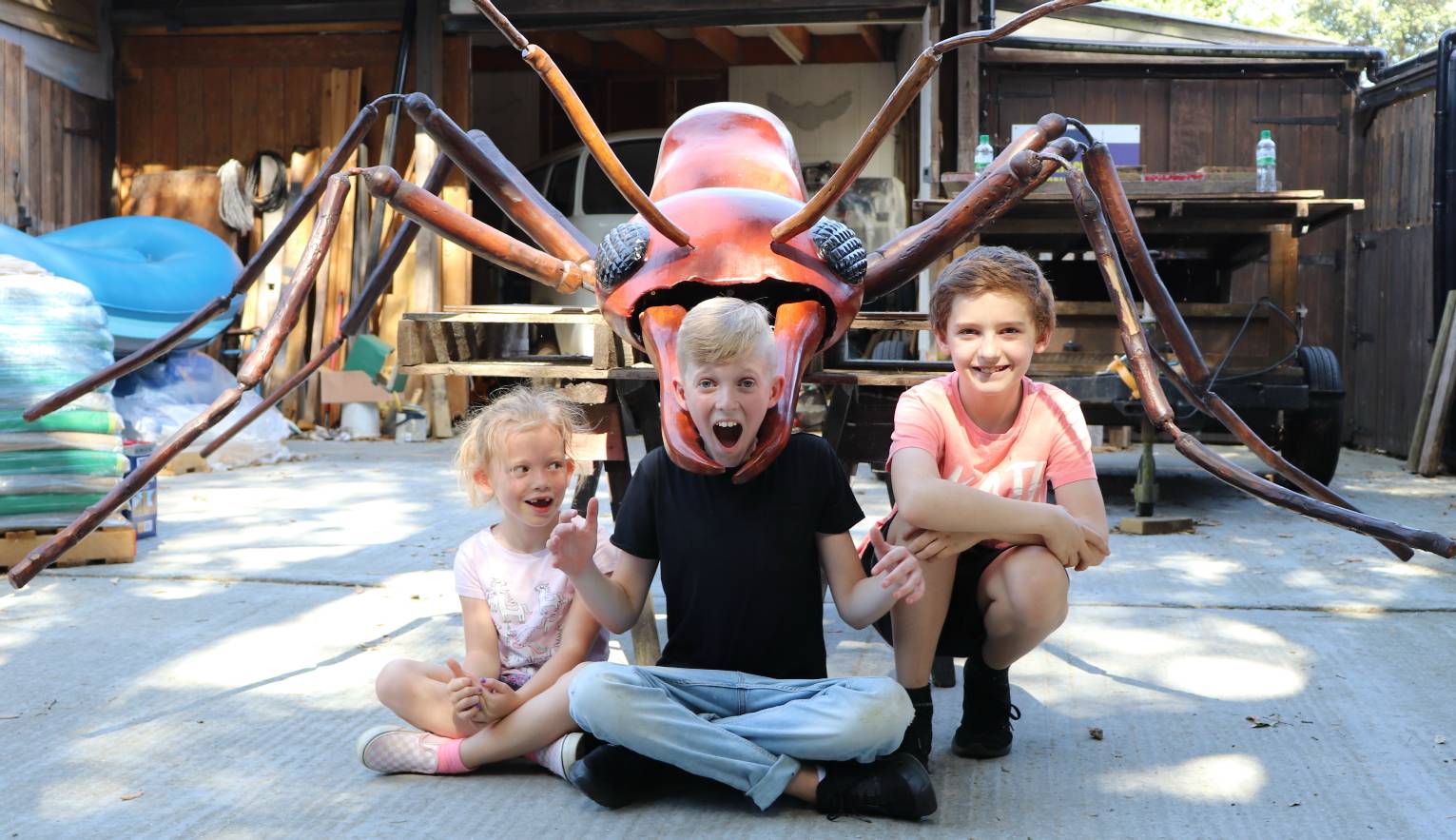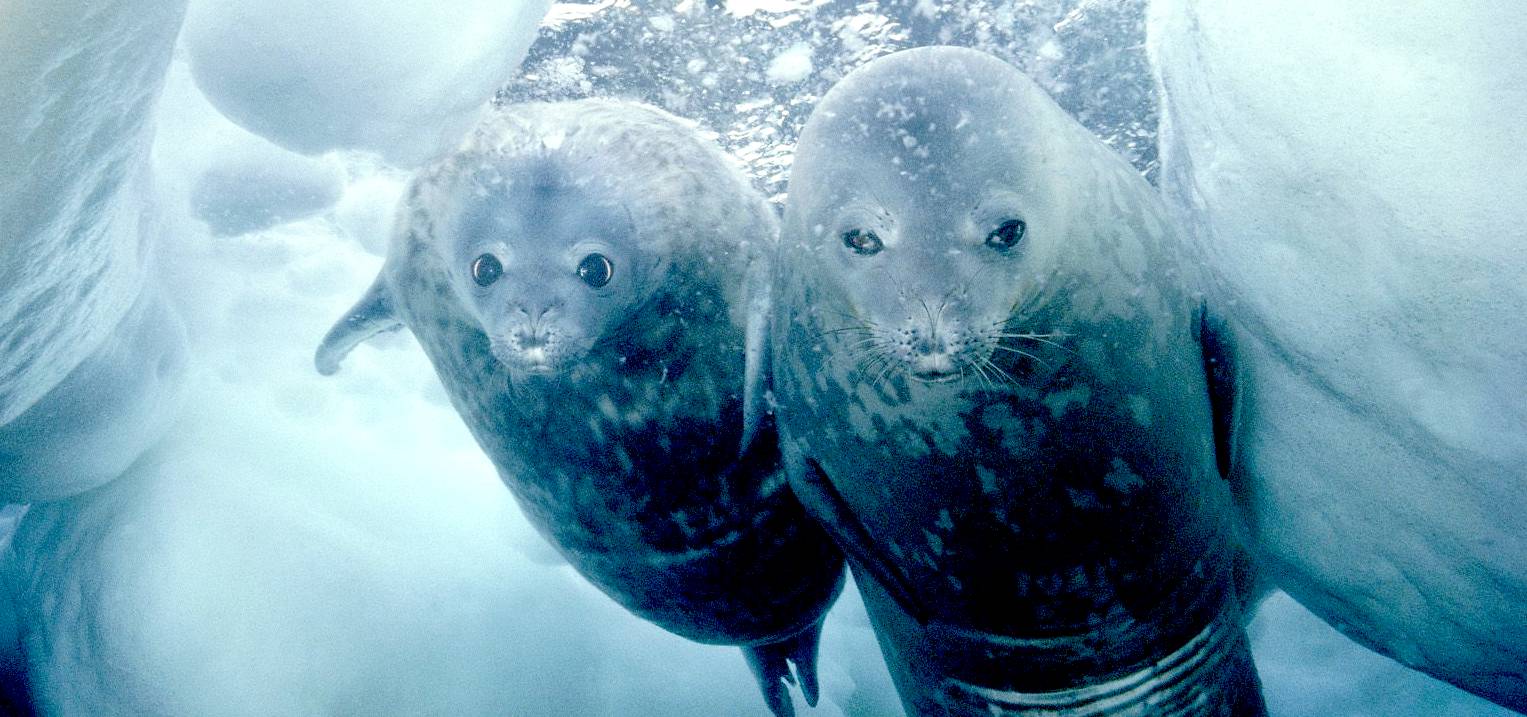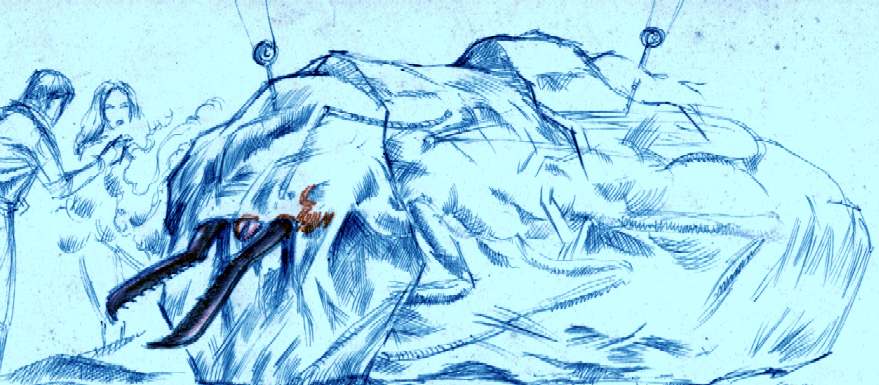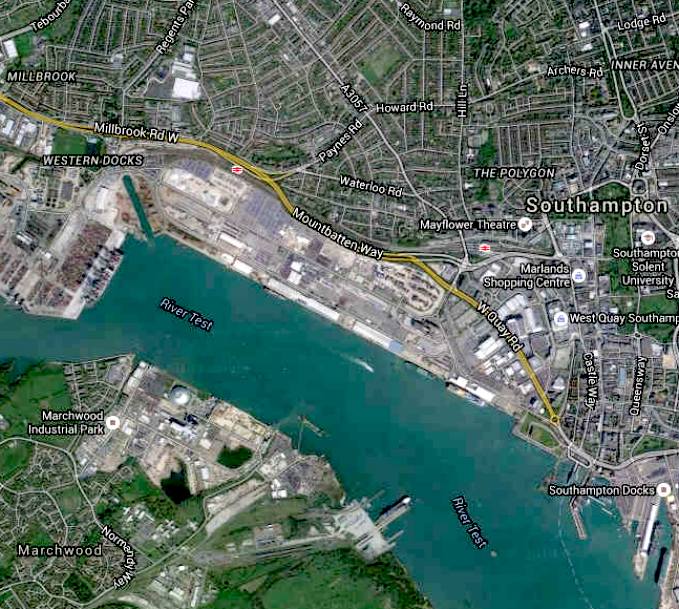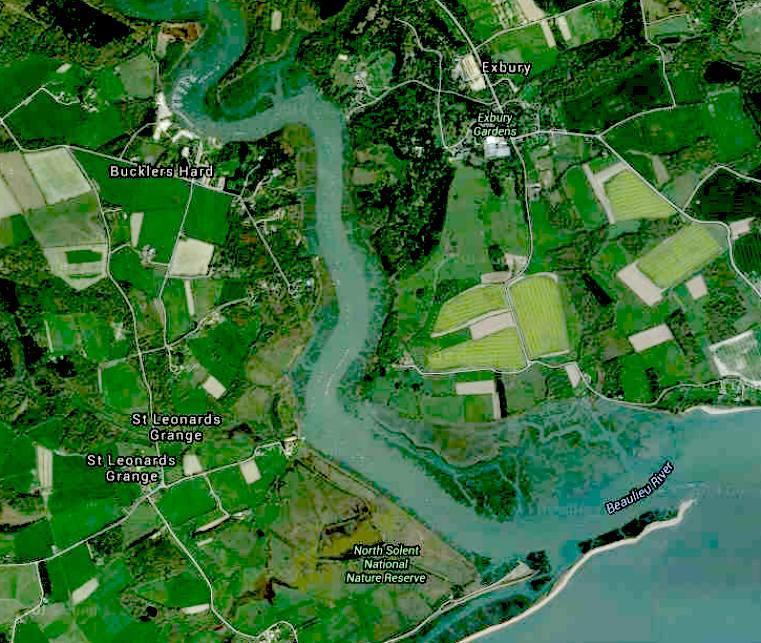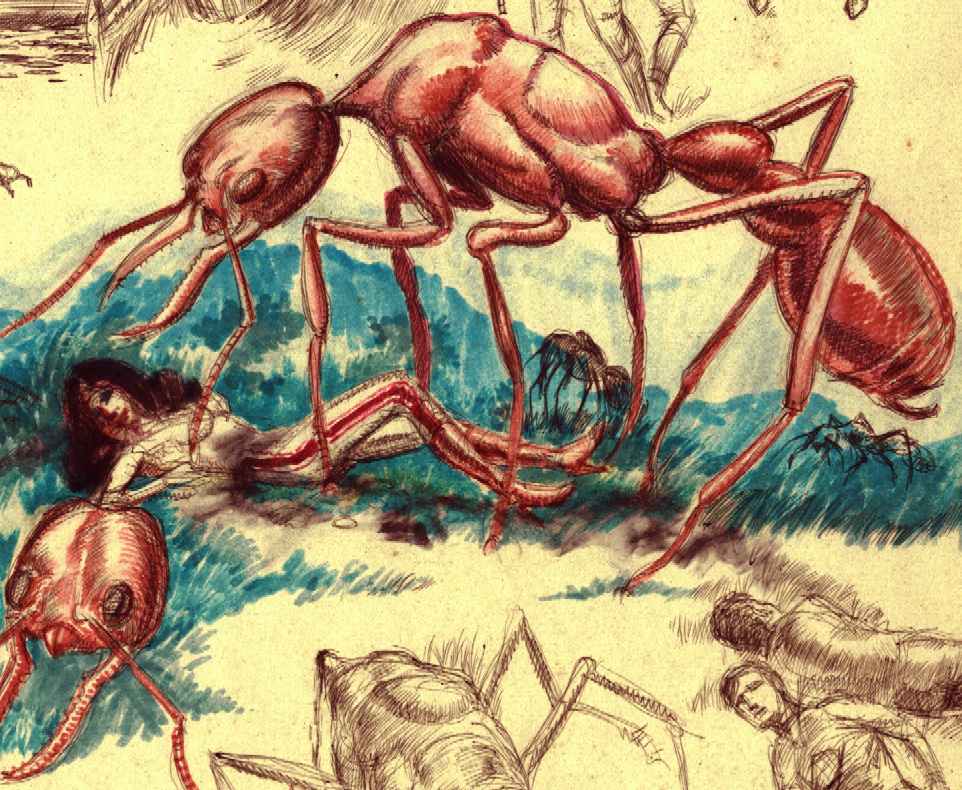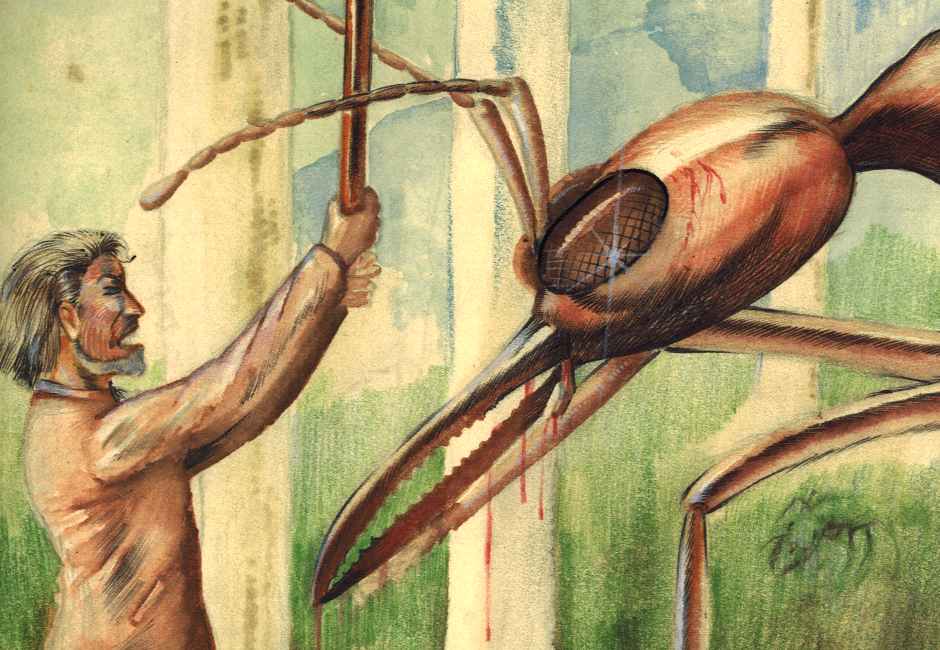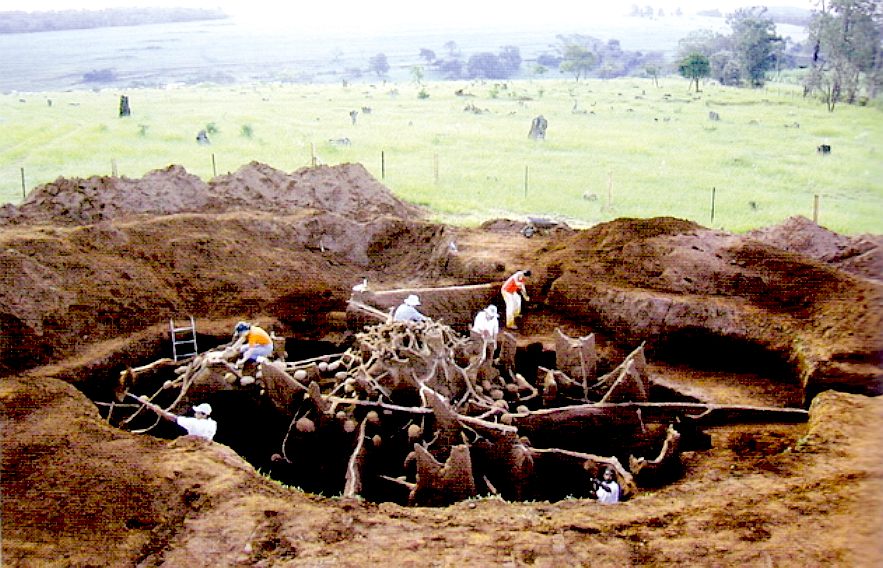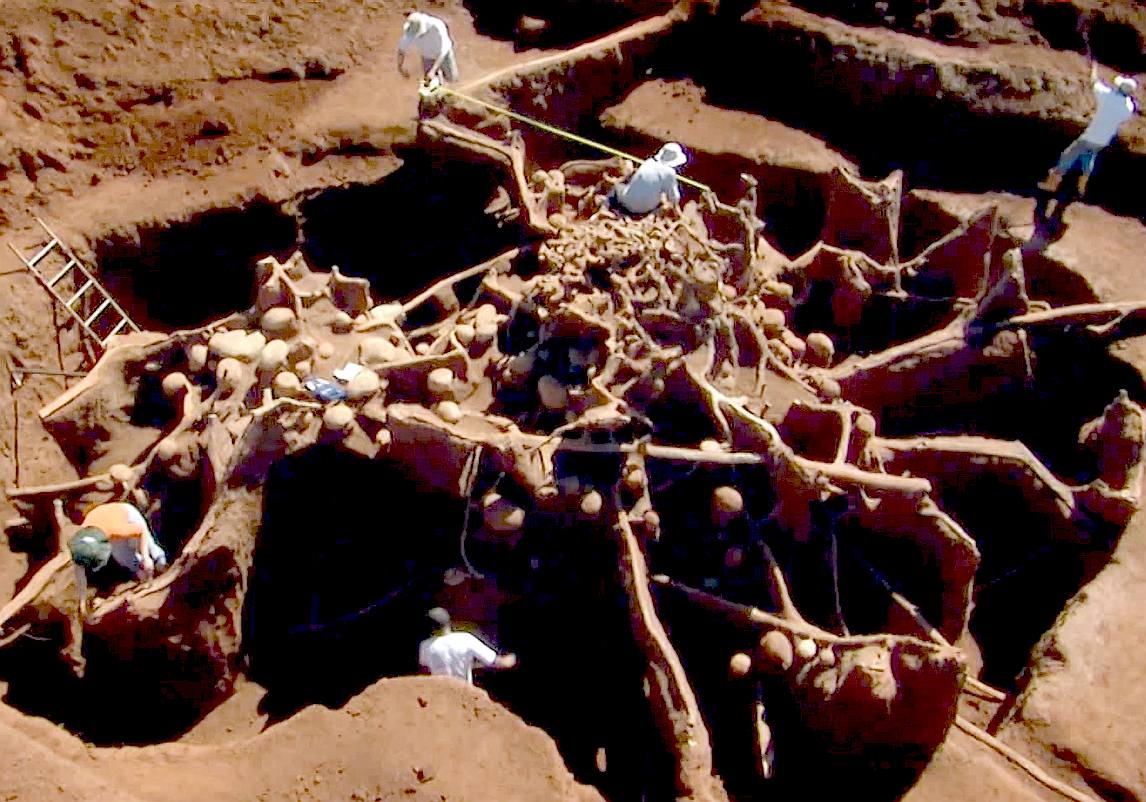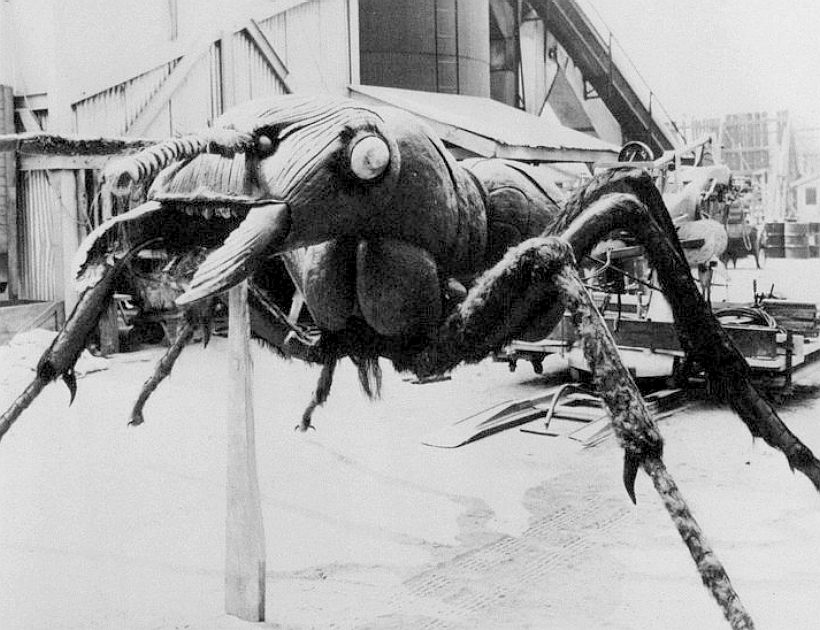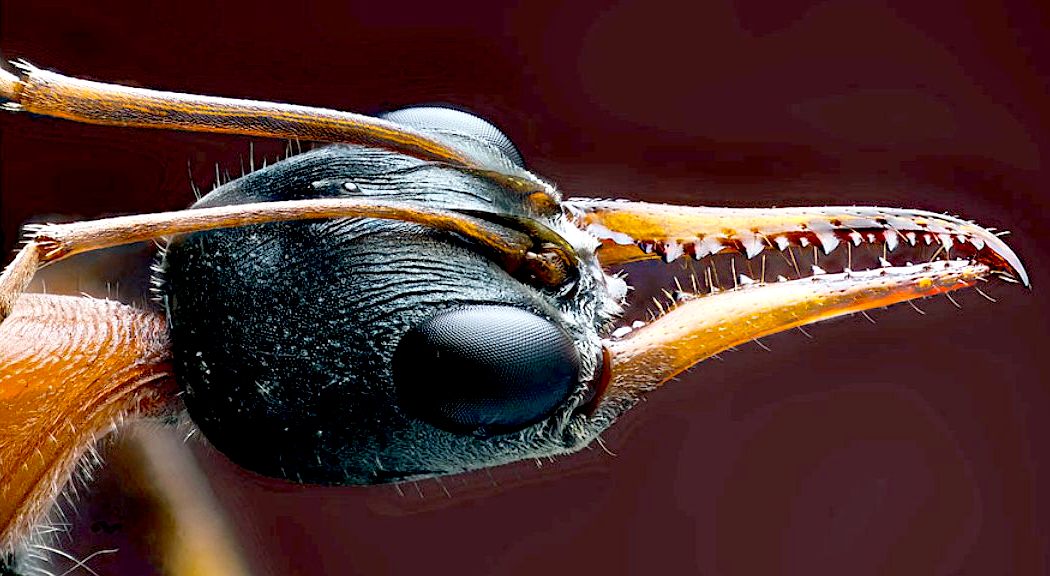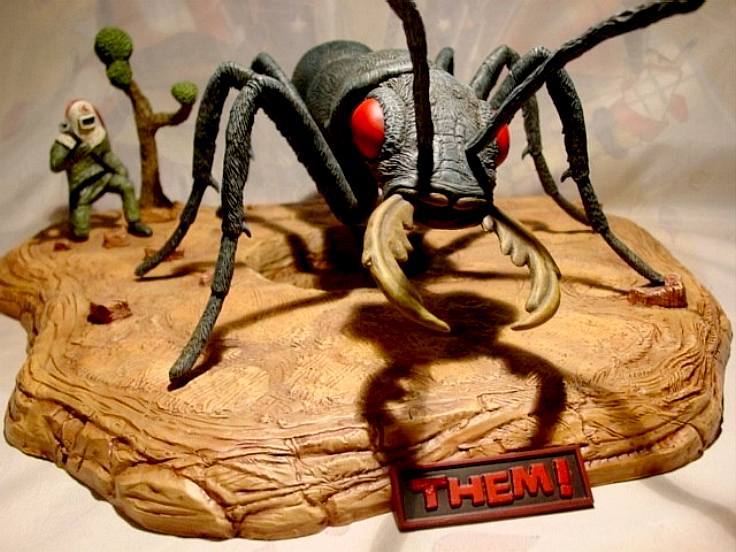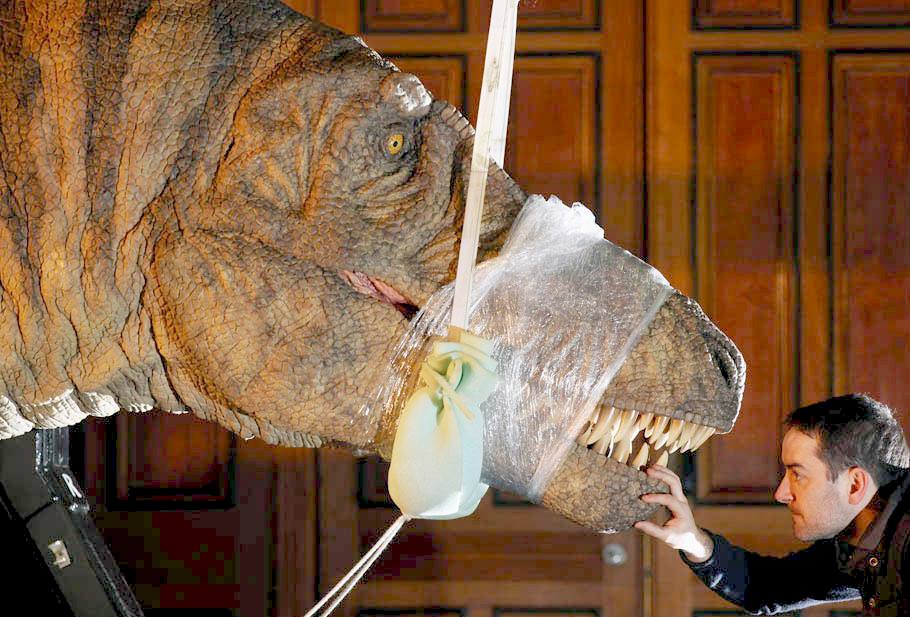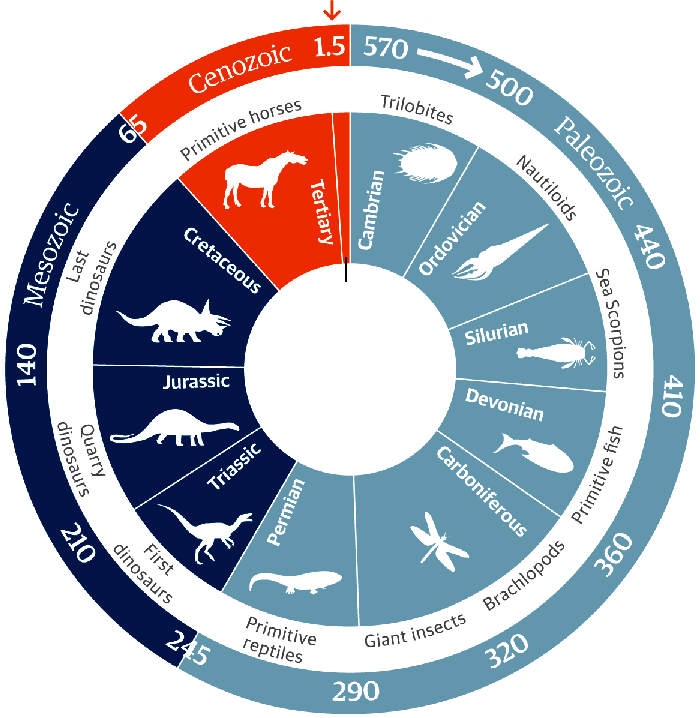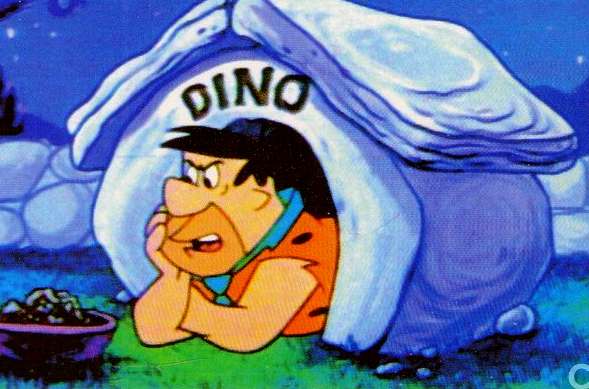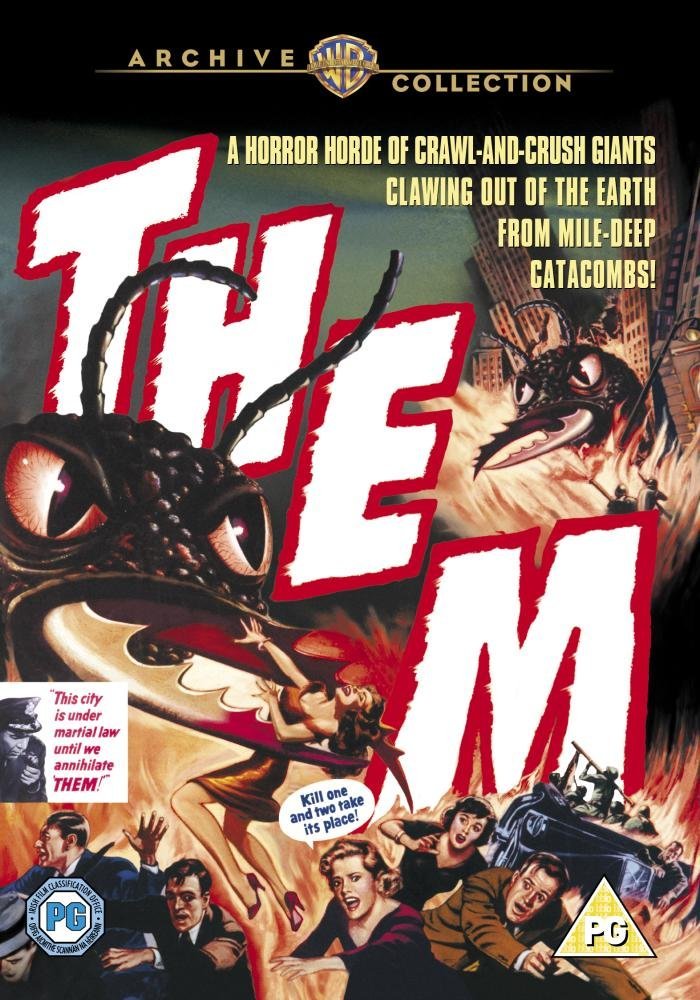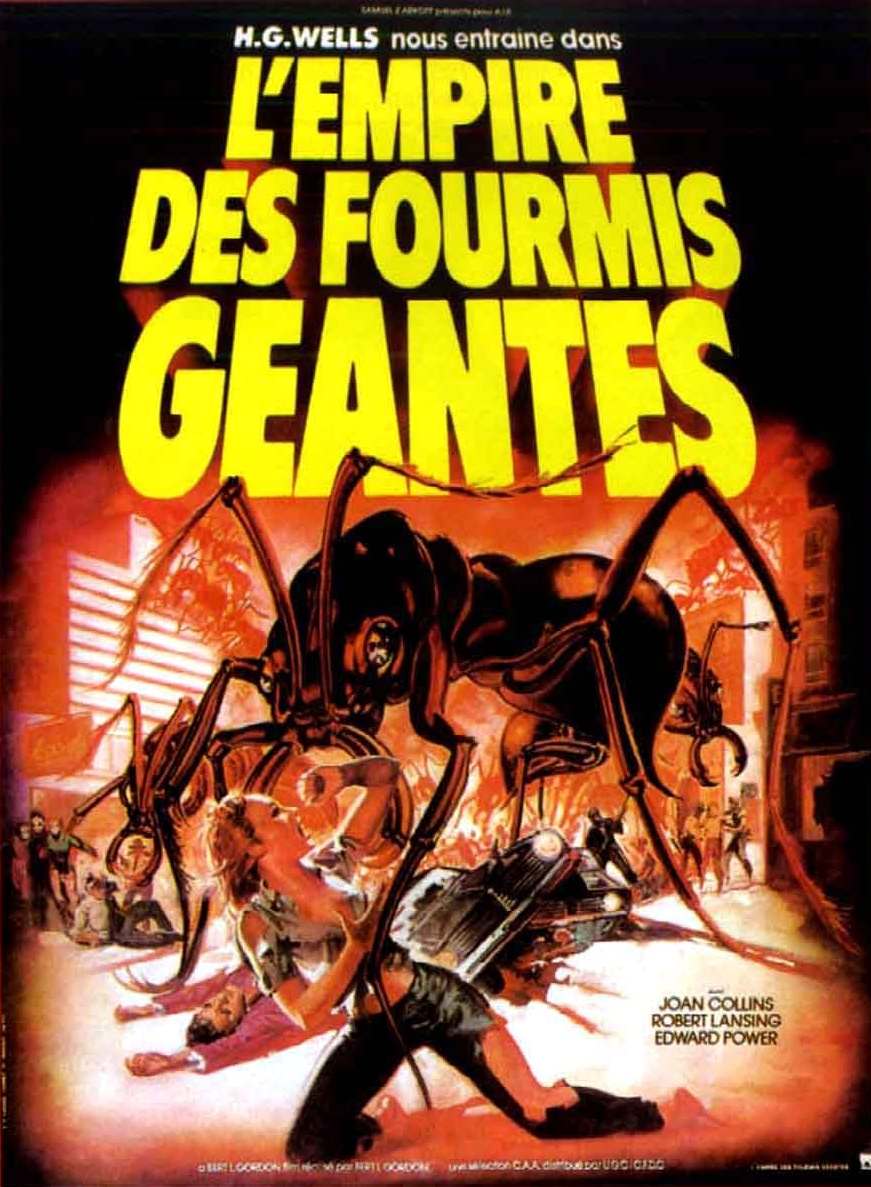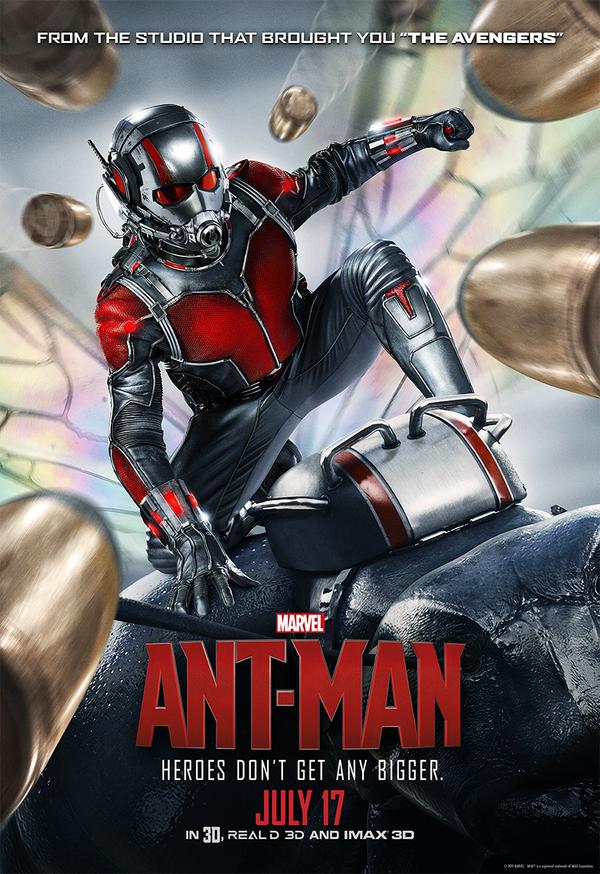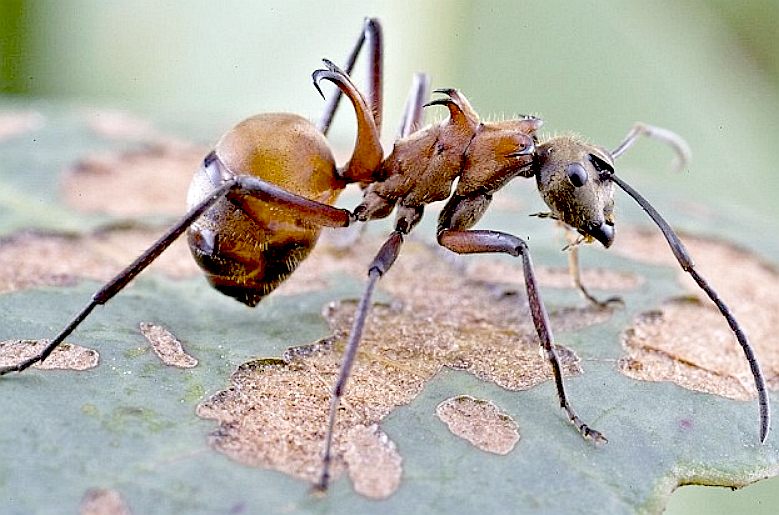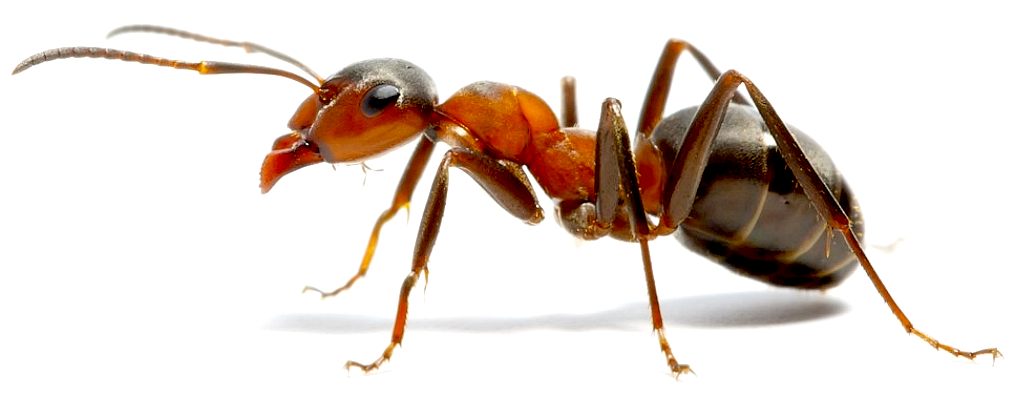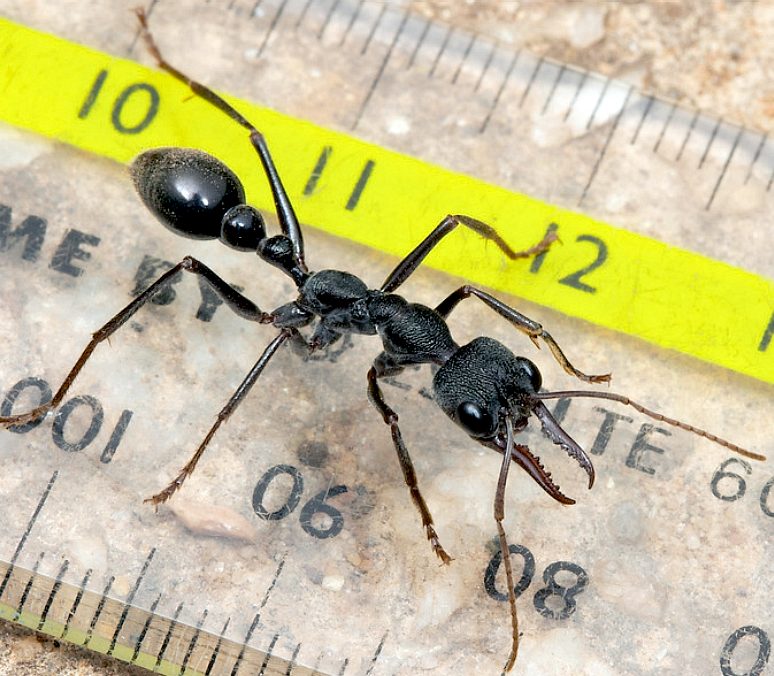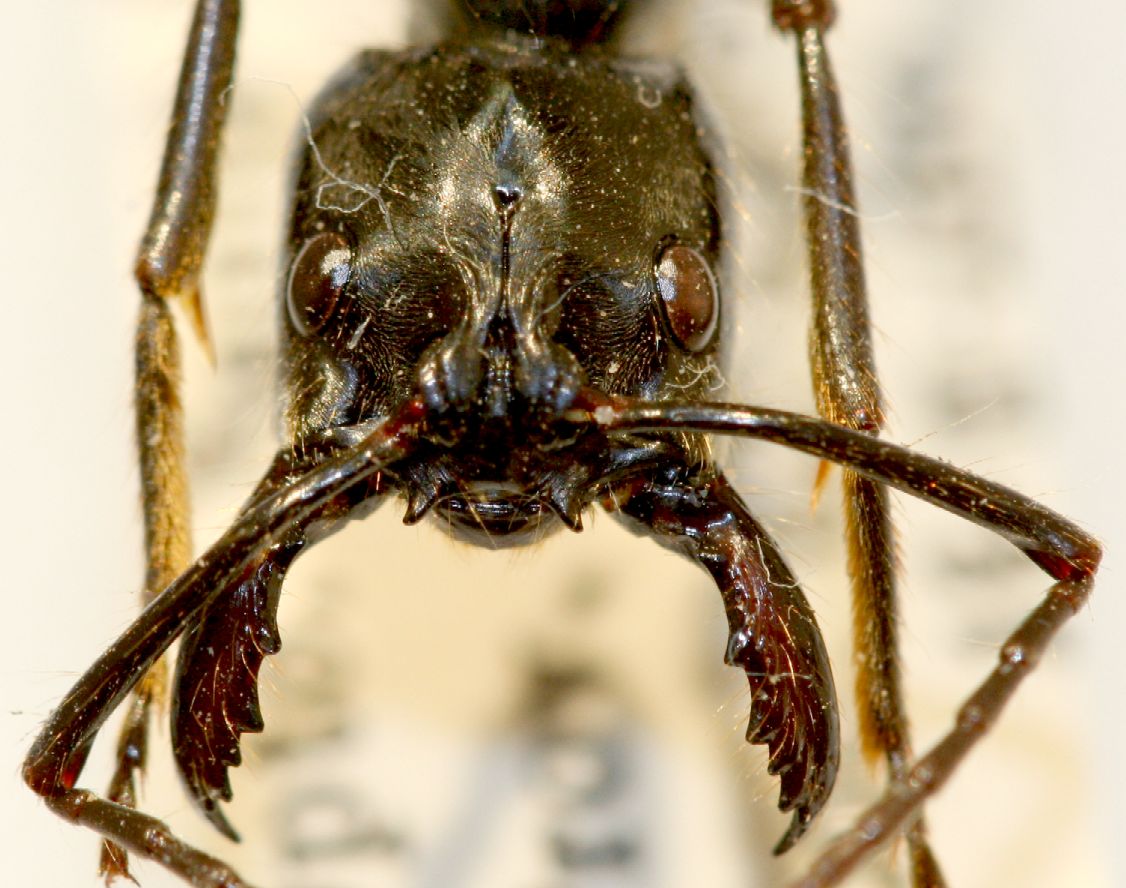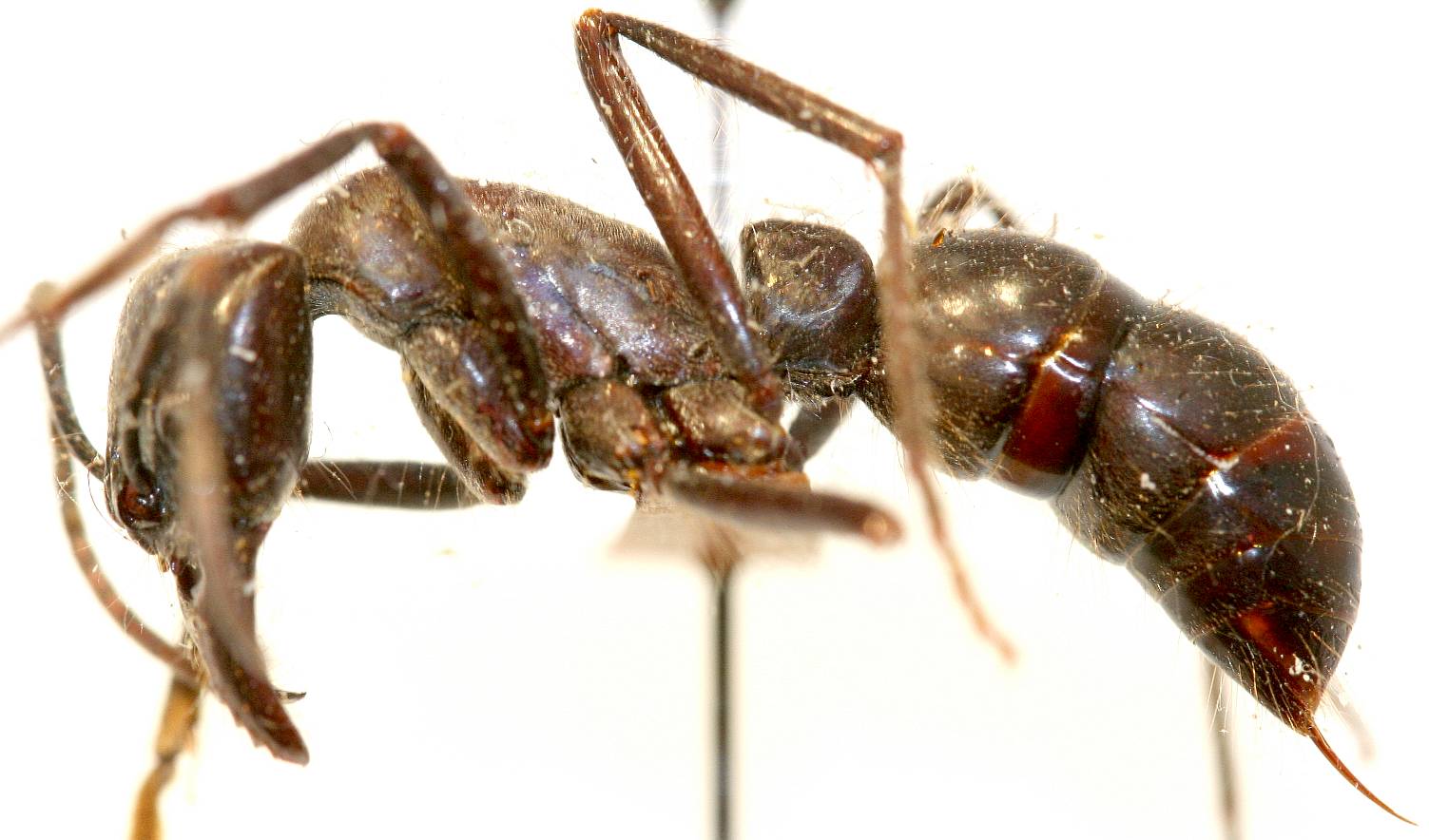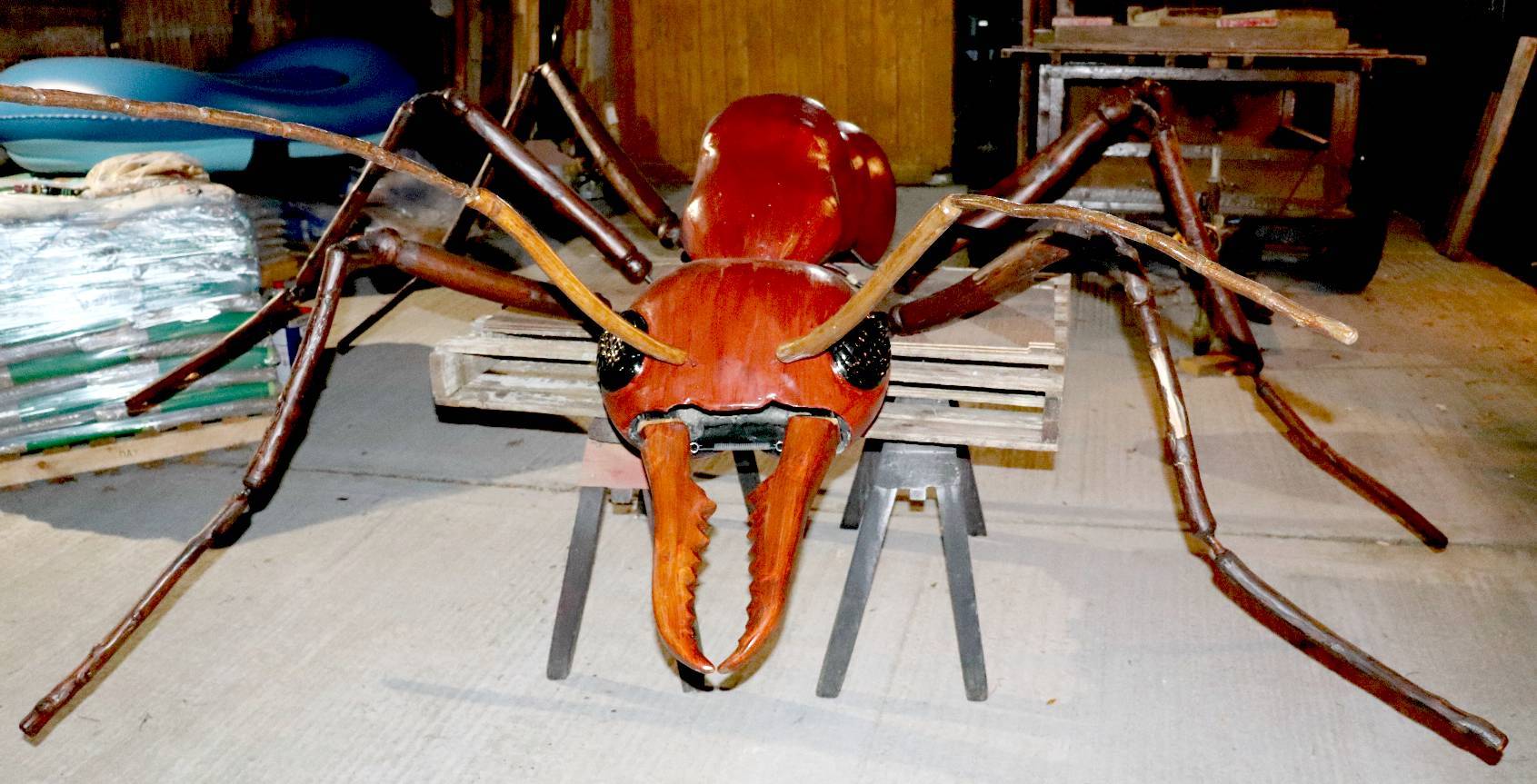|
GIANT PREHISTORIC ANT - SCI-FI MOVIE THEME
ANTICS - ARDUINO - ARMOUR - ARTWORK - BIOLOGY - BLACK BOX - COMPUTERS - ELECTRONICS - ENERGY - FRAME FORMICARIUM - HEAD - JAWS - JIMMY WATSON - KITS - LEGS - MECHANICS - MOTORS - MOVIE - PHOTOGRAPHY - RASPBERRY Pi R/C DRONE - SENTRY SOFTWARE - SOUND PROOFING - SPACE ROVERS - SPEED - SUSPENSION - TAIL - UKRAINE DRONES - WEAPONS - WARGAMING
|
||||||||||
|
JIMMY WATSON - All he wanted for Christmas was a large hexapod robot, to programme. He saved his paper round money for almost a year to buy his dream project. Then, his other dream came true. The Dinobot came to life. The artwork for this story is now at Herstmonceux Museum in Sussex, on permanent display.
SECTASAUR - MOVIE OUTLINE / PLOT
At a time in the not too distant future, the ice melts at both poles revealing features on the land not seen for 200 years. A converted Frigate, the US Arktos is discovered at the South Pole locked into melting ice. She has been missing since an expedition in 1838. A famous ship at the time, formerly the USS Essex, she had been bought at auction in 1837 and hastily refitted by a group of explorers who had come by a fossilized artifact thought to be of considerable archaeological importance. The fossilized jaw was said to have originated in Antarctica brought back as a souvenir by the Russian explorer Fabian Gottlieb von Bellinghausen during his fabled 1820 expedition.
Another fantastic discovery is a labyrinth of tunnels beneath the ice, dated by scientists to be millions of years old. Mysteriously, the scientist who discovered and dated the tunnel complex disappears, but not before his find is leaked to a Sky news researcher on the Discovery channel.
SEALS - The Antarctic, Weddell Sea is home to seals and whales, where killer whales especially benefit from seal meat and the high food energy contained in blubber.
The Antarctic is inhabited by survey expeditions from up to six counties at any one time. Though the country is not the sovereign territory of any one nation. But, by agreeing a series of treaties an understanding is in place and this wilderness is amply protected as a result.
Three new expeditions are launched by competing concerns, the first a Swedish venture lead by a headstrong Bjorn Atlas and his navigator Sven Johansson. The second expedition is a multinational effort lead by Cathy Carter with 3 veteran arctic explorers. The third expedition is a private enterprise secretly funded by Chinese Triads, under the leadership of Lin Po Chang, a child genius and infamous martial arts champion and his two dedicated henchmen.
A race ensues where the teams vie with each other, to secure the archaeological prize that is there for the taking. Lin Po Chang, is not only a master of the martial arts (Taekwondo & Karate) but also a keen paleontologist, who predicted the existence of variant life-forms on this continent and has more than a hunch as to the inhabitants of this tunnel complex.
ANTARCTIC DISCOVERY - Scientists get very excited when they find an extinct species of giant insect in the Antarctic ice. Please note that this drawing is copyright © Jameson Hunter Ltd 2015. You will need permission from Jameson Hunter to be able to reproduce it.
Several fatal accidents occur in quick succession, then an egg clutch is discovered in a section of a tunnel. For a moment all rivalry is dispatched as the parties marvel at the find. They assume the eggs are prehistoric and dinosaur remains, though the eggs have a tough leathery exterior, rather than a hard shell.
Systematically, Chang eliminates the remaining opposition, pitting the Swedes against Carters crew, until only one man and one woman remain alive to challenge Chang: Sven Johansen and Cathy Carter. In a desperate act of self sacrifice, Johansen tackles Chang while Carter escapes seriously wounded to reveal the tragic turn of events to her Sky colleague, the self same Discovery channel researcher - she dies shortly after.
Meantime, Chang deploys his talent to nurture one egg through a simulated incubation when a creature not seen on Earth during Man's evolution is brought back into an unsuspecting world.
The creature is smuggled aboard an ageing Ice Patrol survey vessel called the 'CoolArctic' bound for England, in a crate marked rock samples, whereupon it burrows out and grows rapidly, eating two crew members of the survey vessel who discovered, then tried to kill it. Chang had already relocated the remaining eggs, before setting out to rendezvous with his precious cargo in Portsmouth, unaware of the developments onboard CoolArctic.
ATLANTIC EXPRESS - The container ship reaches Southampton docks. The giant prehistoric insect swims the river heading away from civilization into the New Forest area on Hampshire.
ELIZABETH SWAN - John, Charley and Dan navigate the River Beaulieu to dock at Bucklers Hard. This is not far away from reports of missing ponies.
The second mate on the CoolArctic reports the chaos aboard their vessel to the British Admiralty, shortly after being forced to abandon ship with the remainder of the crew, on the advice of his superiors to scupper the ship. The ship sinks but the resourceful creature manages to cling to flotsam then hitch a ride on a container ship the 'Atlantic Express' under the cover of darkness.
MI6 and the CIA decide to send in John Storm, an expert diver, archaeologist and enthusiastic adventurer to report on the goings on. Storm is happy to oblige if it means adding to his DNA collection for his usual fee - a hefty donation to his favourite charities. Having equipped his solar powered ship, the Elizabeth Swan, with arctic clothing and supplies, he, Dan Hawk and Charley Temple sped from the Southern Ocean to the Weddell Sea and there to Deception Island, an extinct volcano.
The team set up camp onshore and soon the trio locate the excavation site, then using the 'Ark' (a DNA database) Storm uncovers disturbing new evidence to support a theory that dinosaurs were not wiped out by a meteor striking the earth (creating an artificial ice age), but by very efficient hunting animals related to the Vespoidea or Myrmecia Giganticus taxonomic group, part of a long extinct branch of the family Formicidae of the order Hymenoptera - insects in plain speak. This strain appears to have evolved rapidly by adaptive radiation. From the evidence on site it seems that these deadly animals hunted in packs in significant numbers to overwhelm much larger animals (an example of which may be seen in 6mm army ants overcoming a 40mm bull ant and just about any animal in the jungle that gets in their way).
From DNA analysis aboard an energy depleted Elizabeth Swan, Storm estimates that this species grew to between 3-5 metres and that they were warm blooded with a high tolerance to low temperatures, with a kind of lung to supply vast amounts of oxygen to their spiracles via an organ pumped dorsal aorta to the other organs in an otherwise classic exoskeleton arrangement. Storm and Hawk realize the danger if such a creature were ever to be introduced on the mainland and with evidence that eggs have been removed from the site, alert MI6 and the CIA to the danger.
WEDDELL
SEA to ENGLAND - The most direct route is not always the quickest
route across an ocean. There are trade winds and currents that, more often
than not, make it quicker to go with the flow. The Weddell Sea is part of the Southern Ocean and contains the Weddell Gyre. Its land boundaries are defined by the bay formed from the coasts of Coats Land and the Antarctic Peninsula.
Storm and crew head to England at high speed. Meanwhile Chang has landed in Portsmouth, to await the remaining eggs unaware that the CoolArctic is at the bottom of the ocean and the Atlantic Express then docks in Southampton to unload her containers.
The giant prehistoric animal jumps ship at night crossing the River Test heading west, finding comfort in the outskirts of the New Forest where it feeds on ponies that are in plentiful supply. Eventually, losses of these equines come to the attention of a nature group and that is passed on to Hampshire police, relayed to MI6 and thence to John Storm.
Storm and crew came into the Solent proceeding up the Beaulieu River to Bucklers Hard. An expedition into the bracken led Storm some miles from one of the pony corpses toward a wooden area near Worts Gutter (Furzey Lane). Storm called MI6 for backup. MI6 rushed to surround the area with heavily armed troops to protect civilians.
CHARLEY TEMPLE - The above is a scene from the proposed sci-fi movie: Sectasaur. Here, Charley Temple is about to be eaten by one of the prehistoric ants that have been brought back to civilization from the Antarctic ice. Please note that this drawing is copyright © Jameson Hunter Ltd 2015. You will need permission from Jameson Hunter to be able to reproduce it.
John Storm and Charley Temple went in hoping to somehow capture the animal without harming it. They stalked the animal for a time, but the creature had located and been stalking them, following their scent trail - when the giant insect came up from behind over the brow of a ravine and knocked Charley nearly unconscious as she reacted in fright. Storm managed to strike the creature with an axe he had picked up along the way. It fell down lying still in partial shock.
Charley and John marvel at the anatomy of this ancient breed. Ignoring the dangers, they both set about patching the creature's wound with antiseptic and bandages that Charley had brought along in case they got into trouble. The dino ant allowed them to patch her up, ignoring the pain, it lay immobile listening to the couple talking, pretending to be incapacitated. The creature understood that the dialogue between John and Charley is not aggressive or threatening, but rather caring - and marks these two humans down as allies.
JOHN STORM - The Captain of the Elizabeth Swan battles one of the largest prehistoric insects that ever lived, despite his reservations about killing any animal. We may have found a stuntman to play the part of John Storm for the making of a pilot. A pilot in this case is a short film sequence, perhaps one scene, or a trailer to whet the appetite of of film angels. Please note that this artwork is copyright © Jameson Hunter Ltd 2015. You will need permission from Jameson Hunter to be able to reproduce it.
The insectoid feigned recovery, when John panicked and again went for the axe. Also as a reflex action the dino ant lashed out at John, throwing him backwards over a ledge, and Charley sprawling through some undergrowth. He managed to grab hold of a few roots - he was now at the mercy of the creature.
The huge insect rushed in for what John thinks is the kill, but instead puts itself at risk on the ledge to pull John up to safety. Meanwhile government troops are closing in and have seen what looks to them like a struggle, so increase their pace determined to kill the creature.
John dusted himself off while the magnificent insect squatted adjacent, also cleaning itself. Puzzled at the turn of events, he spoke to the animal - and the creature responded, turning its head to look at John - as if trying to understand. The giant insect regarded John's voice as a friendly sign and had logged his and Charley's scent as such.
As a scientist John could not help himself, but to offer his hand palm up to the creature. The animal moved to the hand and studied it with both of its feelers, tickling him. John's heart was pounding, the insect could easily amputate his hand with its razor sharp jaws.
Charley Temple struggled back through the bracken and saw the interaction between John and the insect. She immediately realized that for some reason the creature had accepted them as not being a threat. It had knocked her down as a reflex action. She moved in closer also proffering her hand, and again the prehistoric insect smelled her all over with its antennae. Charley giggled at the touch. Insects smell, taste and feel with their antennae and some have magnetic magnetite in them making a biological compass.
TERRY - If you live in Sussex and not too far from Eastbourne, why not help us to make this project more interesting and get some practical experience under your belt while you are at it. Anyone interested in animatronics or entomology is most welcome, from university students to retirees. Terry will be playing the part of John Storm in a pilot film that could be shot in 2016 if crowd funding is successful. Get in touch if you are interested in film making or acting and might be able to help out on either of these fronts: 07484727027 or email: ace@speedace.info
John and Charley exchanged huge grins at the discovery. This animal was not a threat, but more of a find for mankind. Just then the government troops opened fire wounding the animal. John and Charley both leapt in front of the insect yelling at the soldiers to stop firing, but Charley caught a bullet in the arm and screamed in pain. At this the giant insect pushed them to one side and moved forward to protect them both from the gunfire. In the process, it took several more bullets and finally one to the head. It collapsed.
John and Charley got up shouting as loud as they could to hold fire. Charley was in some pain. The firing stopped, enabling them to get to the insect. It looked at them and raised its feelers, Charley took one in her good hand and John the other and the trio embraced for a minute, then the creature subsided and its antenna went limp - it was dead .........
John shuddered with remorse, anger welling up inside of him. Charley cried openly. A huge soldier ran to the scene whelping with delight at the kill. "Yes," cried the soldier, making macho muscle signs with his arm. "Yes," said John, and gave him a powerful punch to the jaw and the soldier went down. Charley went to hit him despite here sore arm, but a few more men came in brandishing guns. She shouted and glared at them adopting a threatening posture. "Do you know what you have done. You trigger happy idiots." The soldiers had no reply, and they went away rather sheepishly; feeling like idiots. Up to that point they thought they had saved her life.
John filed a report with MI6, advising of a great loss to science. He suggested that the South Pole should be examined further for clues as to how these animals lived, but that only archaeologists should complete such a study, not the military. These scientists would need to be briefed by him and sworn to secrecy. He did not include in his report the few touching moments that he and Charley had experienced. He (they) doubted anyone would believe it.
NOTE: This story is Copyright © Jameson Hunter Ltd, December 2015 and January 2016. All rights reserved.
GIANT ANT NEST
I’ve highlighted ant hills that were made into sculptures using aluminum in the past but this behemoth of a structure is a metropolis in comparison.
THEM - WARNER BROS. - One of the giant ant props at the special effects workshops of the famous film company back in 1954. Wow, if we had that space and their budget! In the film world, anything is not only possible, but expected - and right now. Audiences are hungry for their next sci-fi fix.
THEM - THE 1954 CLASSIC SC-FI MOVIE
Them! is a 1954 American black-and-white science fiction film from Warner Bros. Pictures produced by David Weisbart, directed by Gordon Douglas, and starring James Whitmore, Edmund Gwenn, Joan Weldon, and James Arness. The film is based on an original story treatment by George Worthing Yates, which was then developed into a screenplay by Ted Sherdeman and Russell Hughes.
THEM - MOVIE PLOT
DINO-JAWS - Now that is what we call a pair of snappers. We'll not be aiming to replicate this scheme 100%, but doing an interpretation based on likely evolution with a lot of artistic licence thrown in. That is because it is so vivid, it would not be believed by cinema audiences. The coloration is though superb. H G Wells was famous for his science fiction adventure books, including Empire Of The Ants.
THEM
- MOVIE PRODUCTION
THEM
- MOVIE RECEPTION
THEM - A collectible scale model diorama as a souvenir of the movie.
Since its original release, Them! has become generally regarded as one of the very best science fiction films of the 1950s. Bill Warren described the film as " ... tight, fast-paced and credible ... [T]he picture is suspenseful." Phil Hardy’s The Aurum Film Encyclopedia: Science Fiction noted, "Directed by [Gordon] Douglas in semi-documentary fashion, Them! is one of the best American science fiction films of the fifties." Danny Peary believed the film "Ranks with The Thing and Invasion of the Body Snatchers as the best of the countless 50s science fiction films." In the Time Out
Film
Guide, David Pirie wrote, "By far the best of the 50s cycle of 'creature features' ... retains a good part of its power today." The review aggregator website Rotten Tomatoes reported a 100% approval rating with an average rating of 7.6/10, based on 26 reviews. The website's consensus reads, "One of the best creature features of the early atomic age, Them! features effectively menacing special effects and avoids the self-parody that would taint later monster movies."
MUSEUM PIECE - The Natural History Museum in London uses animatronic models of dinosaurs to bring their displays to life and entertain visitors. The trend continues to make this one of the fastest growing business areas for young engineers to get their teeth into.
NEW
EPOCH: ANTHROPOCENE - Dr Colin Waters, principal geologist at the British Geological Survey and an author
of a study published in Science Magazine in January 2016 is quoted as
saying: “We could be looking here at a step-change from one world to another that justifies being called an epoch.”
Prof Phil Gibbard, a geologist at the University of Cambridge who set up the working group to consider formalising the Anthropocene, said that while he respected the work of the group, he questioned how useful it would be to declare a new epoch. Gibbard suggested it might be better if the Anthropocene was seen as a cultural term – such as as the Neolithic era, the end of the stone age – rather than a geological one.
Humans are altering the planet, including long-term global geologic processes, at an increasing rate. Any formal recognition of an Anthropocene epoch in the geological time scale hinges on whether humans have changed the Earth system sufficiently to produce a stratigraphic signature in sediments and ice that is distinct from that of the Holocene epoch. Proposals for marking the start of the Anthropocene include an “early Anthropocene” beginning with the spread of agriculture and deforestation; the Columbian Exchange of Old World and New World species; the Industrial Revolution at ~1800 CE; and the mid-20th century “Great Acceleration” of population growth and industrialization.
NATURAL HISTORY MUSEUM, LONDON 2011
Three
animatronic giants: Camarasaurus, Tarbosaurus and Gallimimus, were the big stars in Age of the Dinosaur
exhibition that opened on the 22nd of April 2011 in London. Paul Gallagher,
their exhibition Project Manager, is quoted as saying: 'I am really impressed by the skin quality and the realism of the dinosaurs up close,'
after inspecting the 1.5 tonnes Tarbosaurus inside the Museum.
Developed
with palaeontologists, animal behaviour experts, biologists and Museum
curators, Age of the Dinosaur is a unique journey through the three
periods of the Mesozoic era - the Triassic, Jurassic and Cretaceous.
Travelling back between 65 million and 250 million years, visitors are
immersed in scientifically accurate habitats, witnessing the sights,
sounds and smells of the world of the dinosaurs.
An
atmospheric underwater area depicts ocean life from the
Jurassic
period. Animals, fish and ammonites swim past as visitors see specimens
from the deep close up. There's also a Cretaceous period watering hole.
Strange sounds fill the air and accurate recreations of trees, plants,
animals and insects complete the sensory experience.
LINKS & REFERENCE
Popular mechanics culture movies shark night 3ds predators blow jaws out of the water Chicago Zoological Park Illinois Brookfield Zoo Youtube
giant ant nest Blog AL entertainment press register 2011 video giant_insects_exhibit Youtube Hexbug Vex robotic ant http://www.sussex.ac.uk/lifesci/insectnavigation/ http://journals.plos.org/plosone/article?id=10.1371/journal.pone.0122077 Dr Paul Graham http://www.sussex.ac.uk/lifesci/insectnavigation/ http://www.theguardian.com/environment/2016/jan/07/human-impact-has-pushed-earth-into-the-anthropocene-scientists-say http://www.sciencemag.org/content/351/6269/aad2622 http://journals.plos.org/plosone/article?id=10.1371/journal.pone.0122077 http://www.gngebike.com/apps/webstore/products/show/3019663 http://www.electricscooterparts.com/bicyclesprockets.html https://www.aldebaran.com/ http://thirdmonk.net/universe/animals/giant-ant-hill-colony-impresses-scientist.html http://www.softbank.jp/en/ http://electronics.howstuffworks.com/gadgets/other-gadgets/stun-gun.htm http://lynchmotors.co.uk/ http://www.nestle.co.uk/ http://www.mufg.jp/english/ http://www.mitsubishielectric.co.uk/ http://www.maplin.co.uk/ http://www.budk.com/Stun-Guns-2974 http://www.autodesk.co.uk/products/autocad/overview https://en.wikipedia.org/wiki/Four-minute_mile http://www.bostondynamics.com/robot_bigdog.html https://www.youtube.com/watch?v=lFg21x2sj-M http://www.discovery.com/ https://www.youtube.com/watch?v=O5a7xab7WRY http://zjmy-lu.en.made-in-china.com/product/YKNnjrEkZWVS/China-800W-36V-W-Bracket-Electric-Motor-Kit-W-Control-Box-Throttle-F-Scooter-My1020.html http://www.nydailynews.com/news/national/don-sex-robots-expert-article-1.2362308 http://www.theguardian.com/technology/2014/dec/01/nestle-robots-coffee-machines-japan-george-clooney-pepper-android-softbank http://www.theguardian.com/world/2015/sep/28/no-sex-with-robots-says-japanese-android-firm-softbank https://www.czs.org/Brookfield-ZOO/Home http://www.exploreum.com/ http://blog.al.com/entertainment-press-register/2011/01/video_giant_insects_exhibit_ar.html https://en.wikipedia.org/wiki/Them! http://www.imdb.com/title/tt0047573/fullcredits/ https://en.wikipedia.org/wiki/Mechatronics https://en.wikipedia.org/wiki/Animatronics http://www.instructables.com/id/Simple-Animatronics-robotic-hand/ http://www.robots.nu/robot-animals/ http://www.knbefxgroup.com/
LEFT - 1954 Warner Brothers movie poster for "Them." The plots are completely different, but the idea is similar, save that there is a degree more plausibility in the scale - and we hope, the ants to be used in the film. C. LEFT - Empire of the Ants, starring Joan Collins, a movie from 1977. C. RIGHT - Ant-Man from Marvel comics, a 2015 movie that was well received, benefiting from CGI, that has made so many classics that much more enjoyable. RIGHT - Movie idea, lurking beneath the Antarctic ice is a discovery that scientists will die for. This story is now the subject of a low budget pilot to be produced mostly in the UK.
FISH HOOK ANT - This little beauty is from Cambodia, where an interesting defence adaptation is four hooks or barbs that can only really cause pain to an attacker if eaten. Hence, one worker must be sacrificed to ward of predators from the nest - after which most predators learn not to eat this species.
A WOOD ANT - This is a far less ferocious ant found in the south of England: Formica Rufus. You will find them in wooded areas, but please do not disturb the nests - they are a protected species - and they will squirt you with formic acid if you are not careful.
BROWN BULLDOG ANT - A superb example of this Australian Ponerine sporting custom dark coloration at around 30mm in length. Some of these giants are kept as pets, especially the well known Bullet ant in South America.
DINOPONERA GIANT ANT - One of the largest ants in the world with fearsome jaws, not quite so menacing as the Bulldog ant, but still pretty amazing - and with a magnificent sting in the tail.
ANTICS - ARDUINO - ARMOUR - ARTWORK - BIOLOGY - BLACK BOX - COMPUTERS - ELECTRONICS - ENERGY - FRAME - HEAD - JAWS - JIMMY WATSON - KITS - LEGS - MECHANICS - MOTORS - MOVIE - PHOTOGRAPHY - RASPBERRY Pi - R/C DRONE - SENTRY - SOFTWARE - SOUND PROOFING - SPEED - SUSPENSION - TAIL - WEAPONS - WARGAMING
DINOSAURS - DOLPHINS - HUMANOIDS - RAYS - SHARKS - WHALES
ARDUINO - ARM HOLDINGS - BEAGLEBOARD - MBED - PCBS - PICAXE - RASPBERRY PI
A Sectasaur™ (thawed) - now on permanent display at Herstmonceux Museum, in Sussex, England.
|
||||||||||
|
This website is Copyright © 2024 Bluebird Marine Systems. The names AmphiMax™, Bluebird™, Bluefish™, Miss Ocean™, SeaNet™, SeaVax™ are trademarks. All other trademarks are hereby acknowledged.
|
